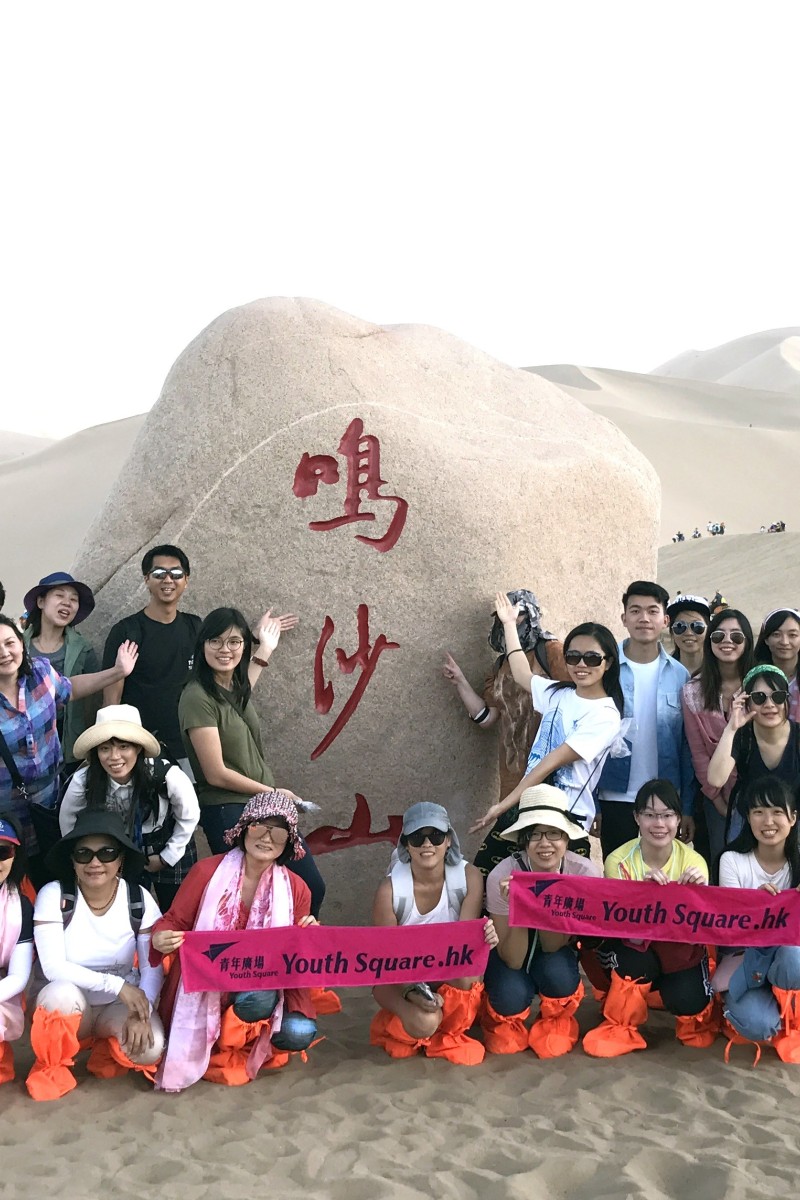
Youth Square sent a group of local students to explore the old city of Dunhuang, famous for its art-filled caves, and sand dunes. We joined the group on their intrepid journey
 The teens were Art and Culture Ambassadors for Youth Square.
The teens were Art and Culture Ambassadors for Youth Square. Young Post joined a group of teens as they became intrepid explorers last month, spending six days trekking sand dunes, navigating their way through caves and studying ancient art in Dunhuang, an Chinese city on the edge of the Gobi Desert. The group went as Art and Culture Ambassadors for Youth Square, and had the chance to meet with experts and learn more about city’s unique history.
Dunhuang was once an important crossroads on China’s old Silk Road. Now, the remote city is best known for its rare, beautiful lake and the Mogao Caves, a series of grottoes filled with Buddhist statues.
The caves were first built over 1600 years ago, carved out of the rock by hand as a tribute to Buddha. Throughout centuries and dynasties, more and more caves were excavated to accommodate new paintings and sculptures. Now, there are 735 caves in total, each filled with elaborate works of art.
Some of the team members didn’t know quite what to expect of the caves, envisaging huge, dark spooky caverns.
“The Mogao is different from what I’d had in my mind”, said Carol Wong Tsz-king from The University of Hong Kong. “I thought Mogao itself is one big cave which went deeper and deeper. But Mogao actually consists of a lot of different caves built at different times.
“And each cave is quite small. Some of them can only accommodate around 13 people.I didn’t know this until I did serious research on what it is” she added.
The level of intricacy and skill of the artwork also took Carol by surprise.
“I thought paintings in Mogao would involve a lot of stick figures from the Stone Age”, Carol laughed. “It turns out the paintings are colourful, detailed and stunning. Through studying these paintings, I’ve learned a lot more about Buddhism”, she added.
Yammy Yung Yu-yan from Sacred Heart Canossian College was equally impressed by the knowledge and expertise of the caves’ ancient craftsmen.
“In one of the caves, there is a window right at the top of the entrance of the cave with a sculpture of a Buddha facing it. But the window wasn’t built for ventilation. The craftsman designed it so the first ray of light at dawn will shine on the face of the sculpture everyday. It has done so ever since it was built” she explained. “I am amazed by the wisdom of people from a thousand years ago. It also shows how dedicated these craftsmen were to their faith,” she added.
Donning helmets, the team visited a cave undergoing restoration. Inside was a Buddha sculputure over 30 metres tall, surrounded temporary structures which allow workers to make painstaking repairs.
“When we were led to the third floor, we saw a worker brushing a small part on the wall. After 15 minutes, he was still working on the same small part” said Yammy. “Doing repair work on heritage sites takes a lot of time, attention to detail and patience” she added.
When they weren’t studying the art and architecture of the Mogao Caves, the team turned their sights from man-made wonders to Dunhuang’s natural marvel: Crescent Spring, a sparkling crescent moon-shaped lake nestled in the desert.
“I was overwhelmed by the power of nature when I saw the full picture of the Crescent Spring from the top of the Mingsha Mountain.” said Yammy.
Young Post's trip was sponsored by Youth Square.